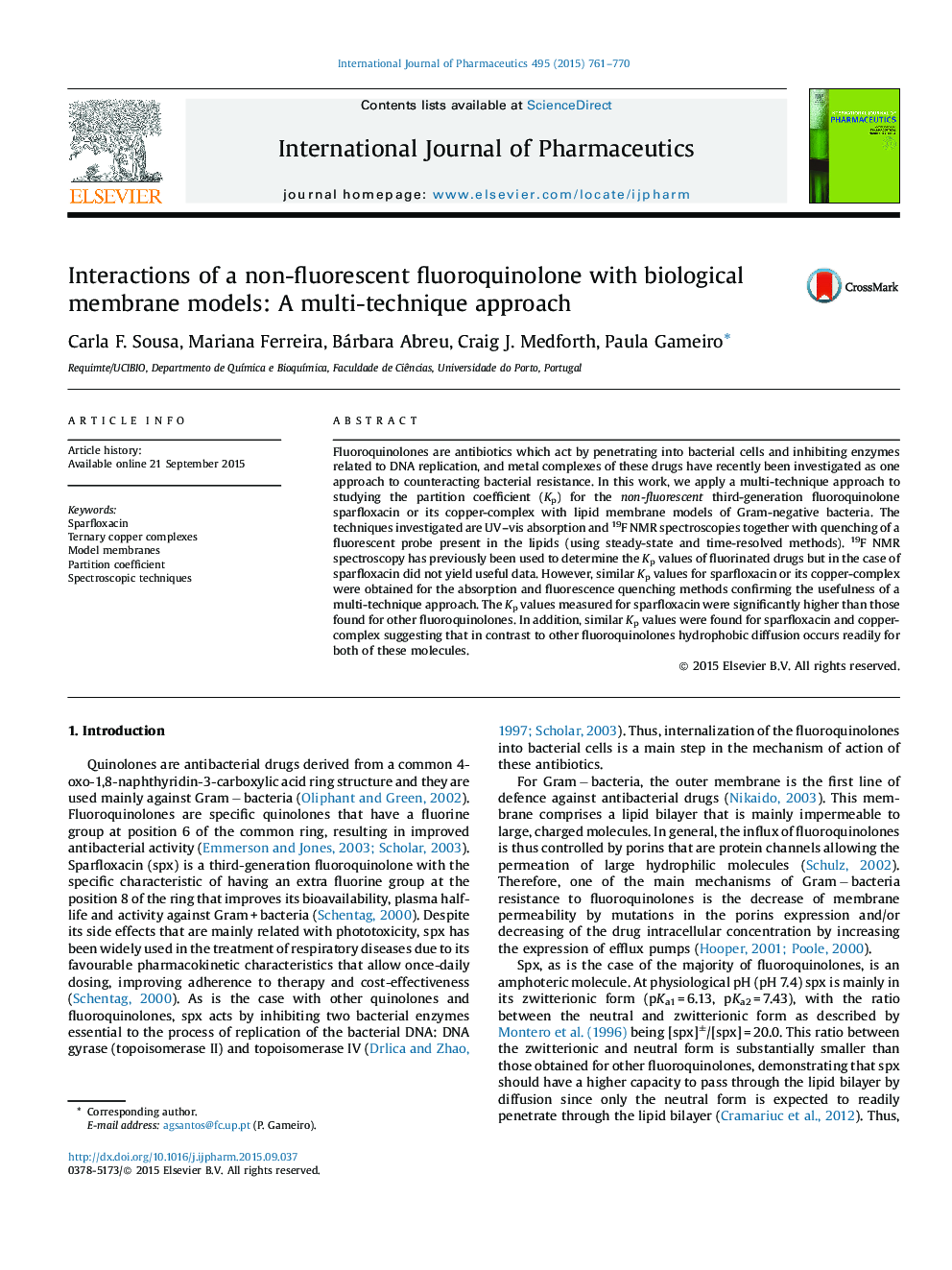| Article ID | Journal | Published Year | Pages | File Type |
|---|---|---|---|---|
| 2501194 | International Journal of Pharmaceutics | 2015 | 10 Pages |
Fluoroquinolones are antibiotics which act by penetrating into bacterial cells and inhibiting enzymes related to DNA replication, and metal complexes of these drugs have recently been investigated as one approach to counteracting bacterial resistance. In this work, we apply a multi-technique approach to studying the partition coefficient (Kp) for the non-fluorescent third-generation fluoroquinolone sparfloxacin or its copper-complex with lipid membrane models of Gram-negative bacteria. The techniques investigated are UV–vis absorption and 19F NMR spectroscopies together with quenching of a fluorescent probe present in the lipids (using steady-state and time-resolved methods). 19F NMR spectroscopy has previously been used to determine the Kp values of fluorinated drugs but in the case of sparfloxacin did not yield useful data. However, similar Kp values for sparfloxacin or its copper-complex were obtained for the absorption and fluorescence quenching methods confirming the usefulness of a multi-technique approach. The Kp values measured for sparfloxacin were significantly higher than those found for other fluoroquinolones. In addition, similar Kp values were found for sparfloxacin and copper-complex suggesting that in contrast to other fluoroquinolones hydrophobic diffusion occurs readily for both of these molecules.
Graphical abstractFigure optionsDownload full-size imageDownload high-quality image (144 K)Download as PowerPoint slide
